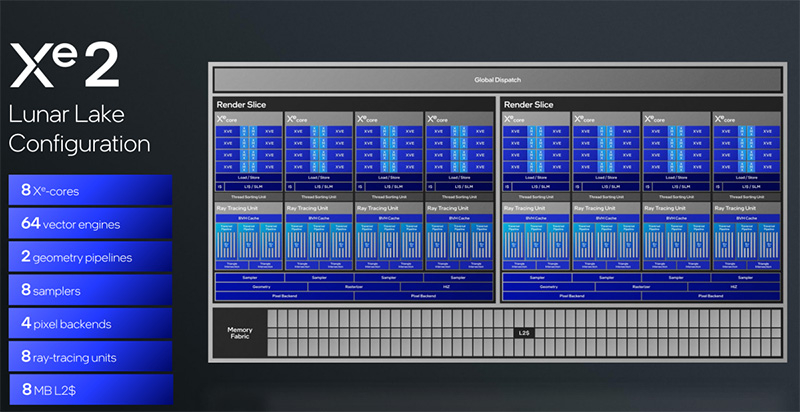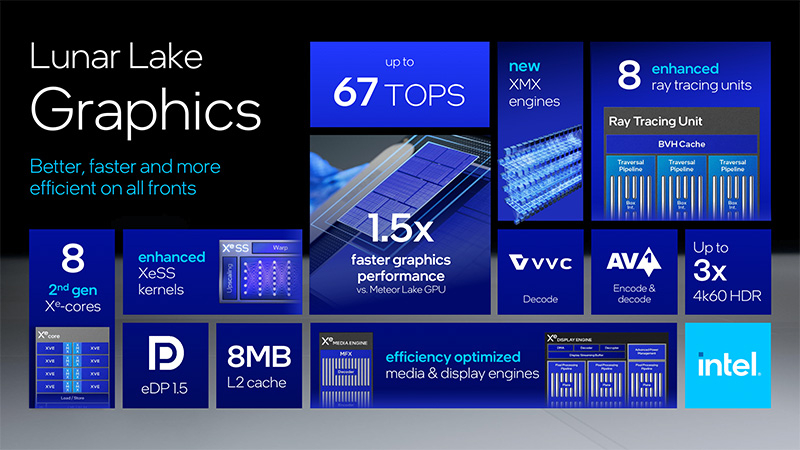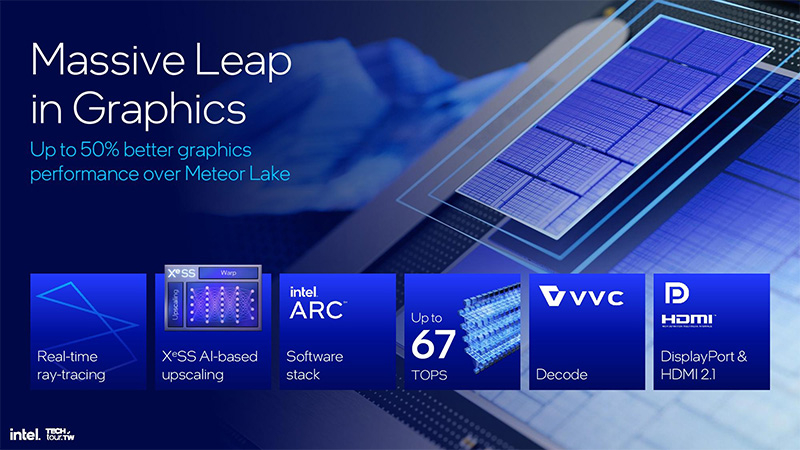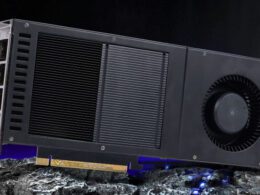Intel Announces the Lunar Lake Processor With New Graphics
Intel’s newly announced Lunar Lake processor features not just the new Lion Cove and Skymont cores, but also an integrated Battlemage GPU, marking the inaugural showcase of Intel’s new Xe2 architecture. The Xe2 architecture will later feature in the company’s discrete graphic cards.
Performance Jump with Lunar Lake
Each new generation of Intel’s mobile processors increases the performance of its integrated GPU. With the launch of Lunar Lake, there will be a sharp performance jump in GPU performance attributed to the transition to the new Xe2 architecture. While Intel refrained from getting into specifics, the corporation did elaborate on Lunar Lake’s potential at a high level, emphasizing Xe2’s superior ‘out-of-the-box’ game compatibility and efficiency.
Revamped Base Core
The Xe’s second-generation core has been revamped to now feature eight 512-bit Vector Processors (XVEs) and eight 2048-bit Xe Matrix Extension (XMX) processors. As a result, the core can execute XVE eight 512-bit multiplications per cycle and 2048 FP16 operations or 4096 8-bit integer operations in XMX. Both tools can be applied for traditional 3D graphics and AI tasks while also improving ray tracing units.

Superior Graphics Performance
The integrated GPU in Lunar Lake comprises eight second-generation Xe cores with 64 vector processors and two geometric pipelines. Based on this makeup, Intel believes that Lunar Lake will deliver 1.5 times the graphics performance of Meteor Lake, which uses first-generation Xe cores, at similar power consumption levels.
Display Support and Codec Compatibility
Furthermore, the Lunar Lake graphics engine supports three displays, including HDMI 2.1 (up to 8K60 HDR 10-bit), DisplayPort 2.1 (up to three 4K60 displays), and the new eDP 1.5 interface, which allows for the use of 360Hz panels with a 1440p resolution in gaming laptops.
Intel’s Panel Replay technology, an evolution of display self-refresh, allows for adaptive screen adjustment alongside selective screen updates, eliminating screen flickering and tears without taxing the processor cores.
Moreover, Lunar Lake offers full hardware encoding and decoding support for the AV1 video codec and enhanced support for the VVC (H.266) codec. According to Intel’s estimates, AV1 files are approximately 40% smaller than the older HEVC format, while VVC can compress files an additional 10% without compromising quality. The capability to decode VVC is beneficial for reducing power consumption due to the codec’s computational complexity.

Optimized for Existing Reality
Intel’s main focus with the Xe2 architecture is its optimization for existing gaming frameworks, primarily geared towards Nvidia architectures. Vector operations have been transitioned from SIMD8 to SIMD16 formats, and ray tracing blocks have been enhanced for multiple BVH (volume intersections) queries.
Lunar Lake processors with the Battlemage graphic core will be launched in the third quarter of the year. Although not specifically targeted at gaming laptops, the advanced GPU makes them a viable option for computers requiring compact size, lightweight design, long battery life, and solid graphic performance. Additionally, MSI intends to use Lunar Lake as a platform for its portable gaming console.





